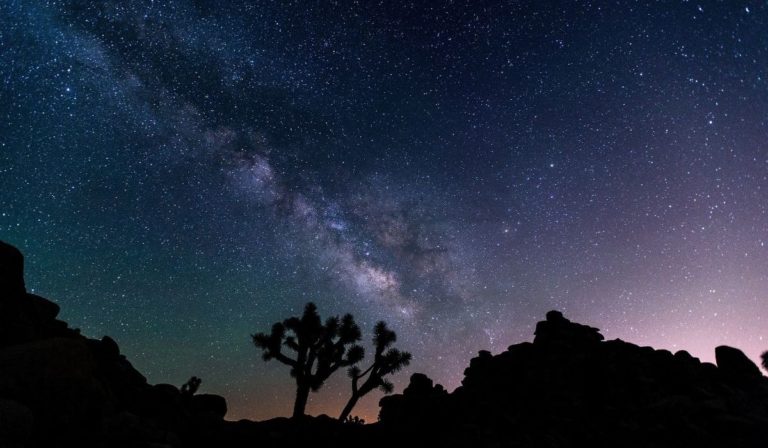I’ve met many Witches who are former Catholics. We make an instant connection, “Me too!” We compare notes about the ways the church prepared us to be Witches and the ways we’re still struggling with our past.
I converted to Witchcraft as a teen. Actually it wasn’t a conversion, it was an awakening. Once a Witch, always a Witch – when I found the old religion I knew I had come home. It turns out that being Catholic was a good preparation for being a Witch. My upbringing in the church gave me an appreciation for ritual, shared sacrament, seasonal celebrations, the Mother Goddess and the many gods. It also taught me how to navigate in a world which historically persecuted Catholics and Witches alike.
One: Love of Ritual
Every Sunday my mother took the whole family to Mass at the cathedral. I wore my best clothes and a lacy mantilla veil on my head. At the church door I dipped my hand in the holy water font and signed myself with the cross. I breathed in the scent of frankincense as my family took our seats on the hard wooden pew. The Mass proceeded through its reassuringly familiar pattern as the bishop in his elaborate robes chanted consecrations in Latin while he moved the chalice and paten on the altar.
Today as a ritualist I chant in magical languages. I use a chalice and a paten, burn incense, sprinkle consecrated water. I wear a special robe and make magical gestures. All of this connects me with the sense of the sacred that enchanted me as a child.
Two: Communal Sacrament
In church on Sundays the priest consecrated the sacrament. We filed out of the pews and got into line, inching our way to the altar. When my turn came I stuck my tongue out where the priest deftly placed a wafer-thin host. As it melted away I understood that this made me a member of the congregation.
The Mass creates a sense of community in the people who attend. Sacred community has been important to me throughout my life. I’ve belonged to many groups and lodges, and my coven has provided the unwavering support of intentional family for more than thirty years.
As a Witch I consecrate wine and cakes to share with my coven. We make wishes for healing, prosperity and love for all the people who have asked us for them. Sharing the sacrament connects me to my coven and to our magical communities.
Three: Seasonal Holidays
In addition to weekly Mass my birth family kept seasonal religious rituals. At Christmas the cathedral was decorated with fragrant evergreen boughs and red ribbons. We lit Advent candles, and my mother gave us cardboard Advent calendars decorated with Santa Claus that had little windows of chocolate for every day until Christmas Eve. Then we’d go to midnight Mass and come home to the presents that Santa Claus had left.
In the springtime we gave up chocolate for Lent. We went to the cathedral on a weeknight to watch the priest mark the Stations of the Cross. On Easter Sunday the Lenten fast was finally over and we dived into the baskets of chocolate the Easter bunny had left.
We celebrated Halloween too. My mother would dress us up costumes to beg for candy door to door on Halloween night, then the next day we’d go to church to celebrate All Saints Day, or pray for the dead on All Soul’s Day on November 2.
It took me a while to realize that I wasn’t learning about Santa Claus or the Easter bunny in catechism class. Their history is complicated; Santa Claus started life as a Christian saint before becoming a gift-giver, while some Pagans argue that the Easter bunny has a Pagan origin. Many other religions mark the darkest day of the year and the return of spring so it’s not surprising that there are resonances. Also the church has historically absorbed seasonal customs like evergreen bough decorations in an ongoing effort to replace folk religion with dedication to the church.
When I started the practice of Witchcraft I wondered if I would have to give up Christmas and Easter. As it turns out almost nothing in my celebration has changed. I still hang evergreen boughs and red ribbons in my house at Christmas and hide a guilty stash of Easter candy in the closet. Christmas, Easter and Halloween have a Christian religious basis, but they have moved into American culture as commercial holidays. There are other celebrations like Fourth of July and Thanksgiving that fill out the secular calendar.
As I developed my new religious practice I found that the sabbats incorporated these seasonal moments. Religious Witchcraft has evolved a yearly cycle of eight sabbats. Four of them are on the solstices and equinoxes and the other four mark the midpoint between them. Winter solstice or Yule coincide with Christmas, Easter falls somewhere around Spring Equinox or Ostara, Samhain maps onto the remembrance of the departed at Halloween.
I love that the sabbats are distributed equally throughout the year. Instead of having one really huge holiday we get a smaller one every six weeks or so. There’s always something to look forward to. Mind you, there’s a big difference for me between the sabbats and the Christian holidays. The wheel of the year tunes me to the cycles of nature instead of telling the life story of Jesus. That said, celebrating Catholic festivals prepared me to honor the sabbats with ritual, decorations, and connection with spirit. (And chocolate.)
Four: The Great Mother
Jesus hangs from the cross in every church I have ever visited. The Mass centers on the Father, Son, and Holy Spirit. However statues and images of Mary holding the infant Christ were everywhere in my childhood. I knew her as the Mother of God and we prayed to her as often as we prayed to Jesus.
The church insists that Mary was not divine, only human. It’s an important point theologically – Jesus is both divine and human and he gets his humanity from his mother’s side. Mary may not be a goddess to the church but she absorbs as much devotion as if she is! Historically Mary succeeded the Pagan goddesses of antiquity. The image of Mary holding Jesus echoes the image of Isis holding Horus. In medieval Europe she inspired as much devotion as a goddess. I’ve seen the Black Madonna of Montserrat in Spain and other Madonnas all over the world.
When I read the Charge of the Goddess, “Hear ye the words of the Great Mother,” I was elated. Here was the Mother equal to the Father, divine and powerful in her own right. The church insisted that God was a Father and downplayed the mother, but the image of Mary turned out to be a remembrance of the ancient female power, and laid the groundwork for the return of the Goddess in the western world and in my life.
Five: Lists of Saints and Gods
Mary wasn’t the only figure besides Jesus in the churches. Mary’s husband Joseph showed up lifting the sacred toddler to his shoulder. Many churches are named for patron saints whose statues are decorated and venerated.
My grandmother taught me about the saints. She gave me scapulars, little felt squares with images of the saints to hang around your neck, to protect me and inspire me to pray. She listed the saints who dispensed specific blessings: Saint Christopher for travel, Saint Matthew for money, Saint Luke for healing. There are dozens of saints for different kinds of healing alone!
As a Pagan I have learned many lists of deities who can be approached for specific reasons. The saint lists are so similar I think of them today as the Catholic version of a pantheon! Today I petition Hermes for prosperity and protection when I travel, Hygeia and Aesclepius when I need healing, and Aphrodite for love. The difference theologically is that the saints are asked to intercede for us with God, while the Pagan deities are gods in their own right and we talk to them directly.
Six: Hiding my Religion
As I grew up I became aware that I belonged to a minority. I wasn’t Christian, that word belonged to the Protestants. I was Catholic. My Protestant cousins let me know that their churches didn’t talk about Mary and didn’t petition saints, that all seemed rather Pagan to them.
When John Kennedy ran for president he addressed anti-Catholic sentiment head-on. My family was proud of our first Catholic president. It hit my mother very hard when he was assassinated.
In school we learned that England had rejected the rule of the Pope and established the Church of England as the state religion. As a consequence the Mass was banned and priests executed. In response Catholics hid their chalices – and their priests! – in house walls. Catholic immigrants to America from Eastern and Southern Europe wereless welcome and less white than Anglo-Saxon immigrants. In the second half of the twentieth century Catholics weren’t exactly persecuted but we were suspect. I learned to downplay my religion.
The Roman Catholic faith was the old religion in England. When I started practicing Witchcraft we called it the old religion too in memory of Inquisition in Europe which burned people at the stake for being Witches. Today we know that these people didn’t actually worship the devil or curse cows, they were women healers, people with property someone coveted, or just unpopular with their neighbors. Some might have practiced European folk religion too.
When I started practicing Witchcraft the memory of the Witch burnings was culturally strong. It was chancy to admit you were a Witch. I knew Witches who lost jobs and lost custody of their children. I was harassed by strangers on the bus for reading books about Witchcraft. I learned to hide even from my friends – one friend innocently introduced me to his family as a Witch and they cornered me in the kitchen shouting at me to repent. People said “thou shalt not suffer a Witch to live” and it warned us to be cautious.
It’s ironic that the Anglican Church persecuted Catholics in some of the same ways that the Roman Catholic Church persecuted Witches. The persistent prejudice against Catholics taught me how to hide my religion as a child, so when I converted to Witchcraft it felt natural to continue to conceal that religion too.
It’s still scary for me to write this. Even today there are communities which persecute Witches and Pagans. The Satanic Panic of the 1980s is being revived by QAnon as I write. The idea that Witches are Satanists and that Satanists torture and kill children wasn’t true in the ’80s and it isn’t true today but the belief that it is makes the world more inhospitable for us.
That said, a lot has changed in the last half century. There’s less anti-Catholic sentiment. John Kennedy had to say he wasn’t the Catholic candidate but the Democratic one, but our second Catholic president Joseph Biden hardly mentioned his religion at all during his election campaign.
Generations of Witches have engaged in education and community outreach that have shifted cultural perception about us as well. Pagan religion and Witchcraft in particular are much better understood today. Just as an example, the Boston Public Library article about Litha references several Llewellyn books. Today in many circles it’s actually cool to be a Witch. It’s a lot easier for me to be open about my religion among strangers as well as friends.
Realizing all of this helps me come to turns with my Catholic past. I left the church with a sense of relief. It had not accepted me as I am. As a teenaged woman I felt a call to the priesthood in a church that even today ordains only men. The church taught me that God is a Father, humans are sinners, and the church should determine my behavior. Witchcraft offered me a place as a priestess of the Mother Goddess who taught that all acts of love and pleasure are her rituals. Witchcraft called to me to be free.
For a long time after I realized I am a Witch I didn’t even want to enter a church or hear the Mass. As I grew into my own power as a priestess over time I have become more able to handle contact with the church. I am able to realize the positive experiences that shaped who I am today. I don’t have to pretend that part of my life never happened. Today I’m a public Witch, and I can be a public ex-Catholic too.




